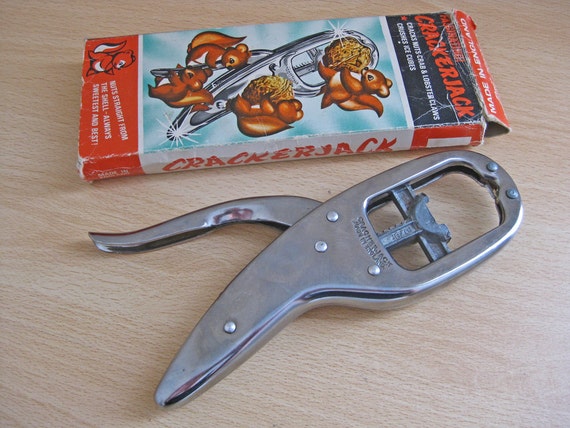2020. 2. 26. 15:00ㆍ카테고리 없음
Nutcracker syndromeOther namesNutcracker phenomenon, renal vein entrapment syndrome, mesoaortic compression of the left renal veinThe nutcracker syndrome results from compression of the left between the and the.The nutcracker syndrome ( NCS) results most commonly from the compression of the left (LRV) between the (AA) and (SMA), although other variants exist. The name derives from the fact that, in the and/or, the SMA and AA (with some imagination) appear to be a crushing a (the renal vein).There is a wide spectrum of clinical presentations and diagnostic criteria are not well defined, which frequently results in delayed or incorrect diagnosis.This condition is not to be confused with, which is the compression of the third portion of the duodenum by the SMA and the AA. Contents.Signs and symptoms The signs and symptoms of NCS are all derived from the outflow obstruction of the left renal vein. The compression causes renal vein hypertension, leading to (which can lead to ) and (classically left flank or ). The abdominal pain may improve or worsen depending on positioning. Patients may also have orthostatic proteinuria, or the presence of protein in their urine depending on how they sit or stand.Since the left drains via the left, it can also result in left pain in men or left lower quadrant pain in women, especially during intercourse and during menstruation.
Occasionally, the gonadal vein swelling may lead to in women. And can result due to compression of the. An unusual manifestation of NCS includes formation and in the lower limbs. Another clinical study has shown that nutcracker syndrome is a frequent finding in varicocele-affected patients and possibly, nutcracker syndrome should be routinely excluded as a possible cause of varicocele and pelvic congestion. In women, the hypertension in the left gonadal vein can also cause increased pain during menses. Etiology In normal anatomy, the LRV travels between the SMA and the AA.
Crackerjack Nutcracker Made In England


Occasionally, the LRV travels behind the AA and in front of the spinal column. NCS is divided based on how the LRV travels, with anterior NCS being entrapment by the SMA and AA and posterior NCS being compression by the AA and spinal column. NCS can also be due to other causes such as compression by pancreatic cancer, retroperitoneal tumors, and abdominal aortic aneurysms. Although other subtypes exist, these causes are more uncommon in comparison to entrapment by the SMA and the AA. Patients with NCS have a tendency to have a tall and lean stature, as this can lead to a narrower gap between the SMA and the AA for the LRV.

Crackerjack Nutcracker England
Diagnosis Nutcracker syndrome is diagnosed through imaging such as doppler ultrasound (DUS), computed tomography (CT), magnetic resonance imaging (MRI), and venography. The selection of the imaging modality is a step-wise process. DUS is the initial choice after clinical suspicion based on symptoms. CT and MRI are used to follow up afterwards, and if further conrfirmation is necessary, venography is used to confirm. Doppler Ultrasound Although its ability to detect renal vein compression is dependent on how a patient is positioned during imaging, DUS is recommended as an initial screening tool as it has a high sensitivity (69–90%) and specificity (89–100%). DUS measures the anteroposterior diameter, and a peak systolic velocity at least four times as fast as an uncompressed vein is indicative of NCS.
CT and MRI CT and MRI can be used afterward to confirm compression by the AA and SMA with comprehensive measurements of the abdominal vasculature. A 'beak sign' can often be seen in CT scans due to the LRV compression. However, CT and MRI cannot demonstrate the flow within the compressed vein. These two modalities can be used to confirm other evidence for NCS such as back-up of blood flow into the ovarian veins. Venography If further confirmation is necessary, venography is used as the gold standard test in diagnosing nutcracker syndrome. A renocaval pullback mean gradient of 3 mmHg is considered diagnostic.
Although this method continues to be the gold standard, values in unaffected individuals may be vary considerably, leading to some measurements in NCS patients to be similar to those in normal individuals. This may be partly due to compensatory mechanisms in the vasculature as a result of the increased blood pressure. The invasive nature of the procedure is another consideration in comparison to DUS and CT/MRI as imaging modalities.
Differential diagnosis. malignancy.Treatment Treatment depends on the severity and symptoms. In addition to conservative measures, more invasive therapies include endovascular stenting, renal vein re-implantation,. The decision between conservative and surgical management is dependent on the severity of the symptoms. Conservative management is used if the patient is a child and the hematuria is mild. In contrast, more severe symptoms such as reduced renal function, flank pain, and anemia are managed with surgical interventions. Conservative management Conservative management is advised in children as further growth may lead to an increase in tissue at the fork between the SMA and AA, providing room for the LRV to pass blood without obstruction.
Treatment in this case involves weight gain to build more adipose tissue, decreasing the compression. Venous blood may also be directed towards veins formed as a result of the higher blood pressure, which may contribute to symptomatic relief for individuals as they age. 75% of adolescent patients have been found to have their symptoms resolved after two years.
Medications that decrease blood pressure such as can also be used to reduce the proteinuria.